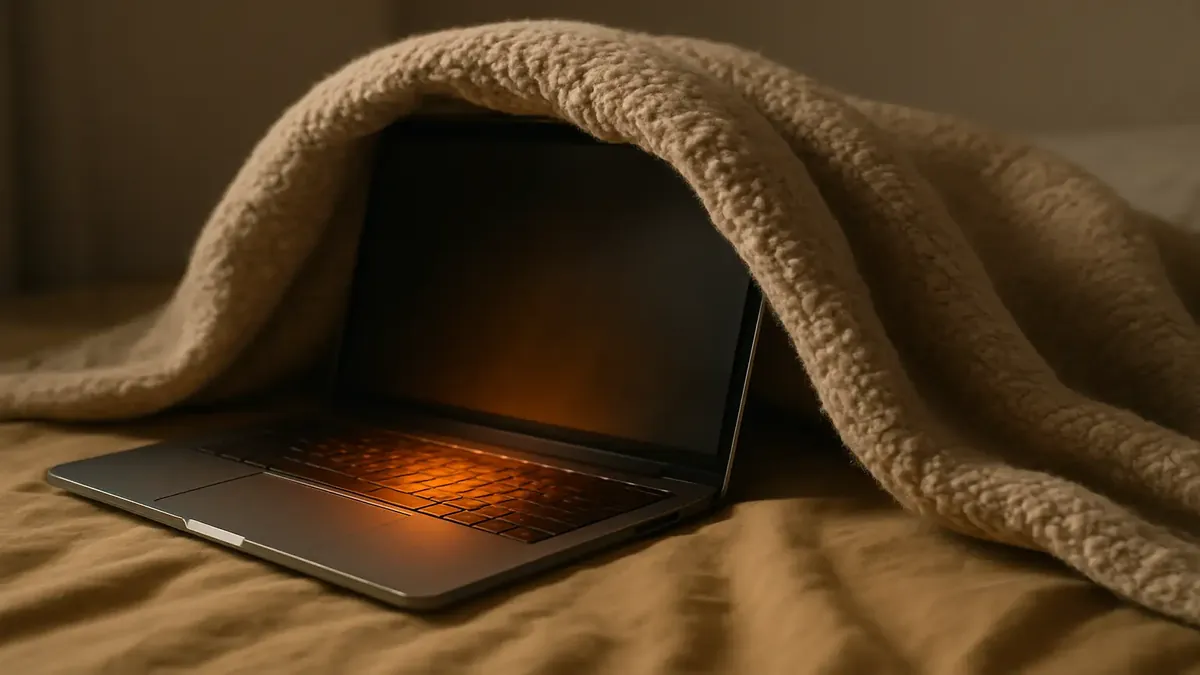Why Your Laptop Sounds Like a Jet Engine: The Case of the Suffocating CPU

Have you ever noticed your laptop turning into a hotplate or, worse, a miniature jet engine ready for takeoff as you binge-watch your favorite shows? Maybe the keyboard starts to feel less like a friendly input device and more like a hand warmer on steroids. If this sounds all too familiar, gather 'round, dear reader, because you just might be smothering your poor computer—and not with love.
Let’s dive into a real-life tech support tale that’s one part drama, one part comedy, and 100% relatable to anyone who’s ever worked (or snacked) from bed with their trusty laptop by their side.
A Laptop in Distress: The Hot Blanket Mystery
Recently, a frantic friend messaged me in full panic mode. Their laptop, they claimed, was “trying to cook itself alive.” The fan noise was so intense it threatened to drown out even the most dramatic Spotify playlist, and the keyboard was so warm it doubled as a heating pad (bonus points in winter, perhaps, but not ideal for electronics).
As any sage tech support veteran will tell you, the first step of the troubleshooting dance is always: “Did you try restarting it?” Spoiler: It rarely solves hardware woes, but it’s tradition. After several restarts and enough sighing to power a wind farm, it was time for a deeper investigation.
The Hidden Culprit: Bed, Blanket, Disaster
It turns out, the laptop wasn’t dying. It wasn’t even particularly sick. It was just… suffocating. My friend had been using it exclusively on their bed, with blankets and pillows cocooning it like a cozy burrito. The problem? Laptops, like humans, need to breathe. Underneath that plush comforter, the cooling vents were blocked tight, and the CPU was getting a taste of sauna life it never signed up for.
Why Laptops Need Air (And Not Just Wi-Fi)
Here’s the science-y bit: Laptops rely on airflow to keep their processors and components cool. Most have little vents on the sides or bottom that draw in cool air and expel hot air. Block those vents—even unintentionally—and the heat has nowhere to escape. The CPU gets hotter, the fans ramp up, and before you know it, you’re typing on a skillet.
Overheating isn’t just uncomfortable; it can throttle performance, reduce your laptop’s lifespan, and sometimes even cause unexpected shutdowns or hardware damage. In short: Airflow isn’t optional. It’s essential.
The Rescue: How to Cool Down Your Laptop
Armed with a can of compressed air and a YouTube degree in laptop maintenance, we sprang into action:
- Vent Cleaning: First, we blew out the dust bunnies with compressed air. You’d be surprised what accumulates in those tiny holes—enough to build a small mouse nest.
- Thermal Paste Refresh: With a little online guidance, we replaced the old, crusty thermal paste between the CPU and heat sink. This goo helps transfer heat, and over time, it can dry out and lose effectiveness.
- Desk Duty: Most importantly, we moved the laptop to a hard, flat surface—a desk!—so the vents could finally breathe.
- Bonus Cooling Pad: For extra brownie points (and extra cooling), we placed the laptop on a USB-powered cooling pad.
Within minutes, the fan settled down, temperatures dropped, and the keyboard was safe to touch again. Peace was restored.
Moral of the Story: Love Your Laptop, Let It Breathe
So, what’s the takeaway here? Laptops don’t thrive in fluffy environments. Beds, blankets, and pillows are their natural enemies. Give your device a chance—set it on a hard surface, keep those vents clear, and it’ll reward you with quiet, efficient performance (and fewer panic messages to your IT friend).
Pro Tip: Invest in a cooling pad if you’re a chronic couch or bed worker. Your laptop—and your fingertips—will thank you.
Have you ever accidentally roasted your laptop? Got any cooling hacks or hilarious tech support stories? Share your tales in the comments below! Let’s swap stories—and maybe save a few CPUs from accidental blanket smothering.
Original Reddit Post: POV: Laptops can’t breathe under blankets